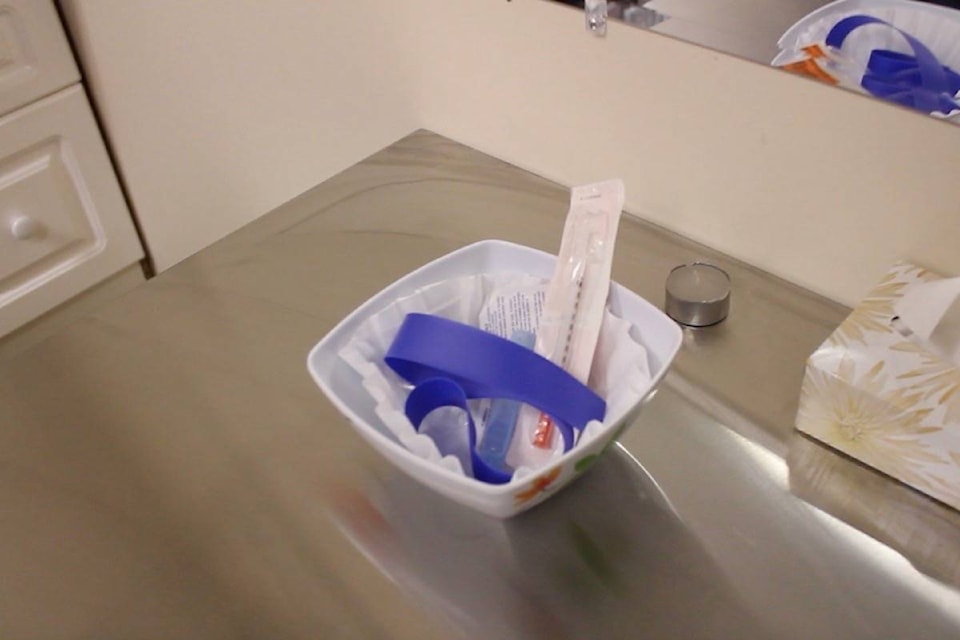This is the first instalment in a series looking at how local agencies are dealing with the opioid crisis.
***
Sometimes it’s a ziplock bag filled with a clean pipe, screens and a safer smoking brochure.
Other times it could be a safe injection room, with clean supplies and the supervision of trained staff.
Safer options for those using illicit substances in the Comox Valley are growing, as is the reality of overdosing and death from opioids, says the Courtenay and Campbell River manager of AIDS Vancouver Island.
Sarah Sullivan notes that both fentanyl and carfentanil are being detected in the area, and the Valley has “definitely” been hit by the overdose crisis.
A report from the BC Coroners Service released this year shows the largest increase of illicit drug deaths among B.C. regions was on Vancouver Island, with 155 opioid overdose deaths in 2016 - a 156 per cent increase from 2015.
Of those, 23 overdose deaths occurred on the North Island.
“So the numbers in the North Island per capita are comparable to Vancouver and Victoria,” she explains.
As a result, in collaboration with Island Heath, the Courtenay office opened a safe injection room March 27, as instructed by the Ministry of Health to establish overdose prevention rooms in response to the high number of deaths due to illicit drug use last year.
Island Health provides funding, explains Sullivan, but the room falls in line with the organization’s harm reduction services - something they have been providing for decades.
“We provide equipment for people who are injecting drugs or inhaling or snorting so that they can do it safer to prevent the spread of infectious diseases, but the other piece of that is also to connect people up with services that they may need. The people who are coming in for these services are already using drugs. Period.”
Sullivan notes their services are not about enabling drug use, rather it’s about providing basic first aid response.
“Rather than having someone be found in a bathroom and they’re dead, and there’s no chance of reviving them, we can offer an immediate response.”
With clean supplies, naloxone kits and a staff member always present, clients are encouraged to use the room and then wait in the drop-in area for 20 minutes after they consume their drug so that staff can continue their monitoring; the office has oxygen and pulsometers on hand if needed.
Sullivan says she hopes the room breaks misconceptions of a safe injection site, and so far neighbourhood reaction has been positive.
“It’s not just about the equipment because a vending machine can do that; it’s about that human connection and treating people with respect. We meet people where they’re at. We don’t have an agenda and we don’t have any preconception … about their drug use.”
AIDS Vancouver Island held a meeting with its downtown neighbours (the office is located at 355 Sixth St.) and there were no concerns, she notes.
“We’ve been in this site for a long time. Our neighbours know what type of service we run, and we work really hard to work with our service users to be good neighbours so that we are just another service like anyone else.”
Currently, the room is open Monday to Thursday, 9 a.m. to 4 p.m., and 11 a.m. to 3 p.m. on Friday. The organization is hiring additional staff with the intention for the office to be open four hours each day on weekends, with a goal of offering service seven days a week.
The harm reduction supplies and the room is part of a full comprehensive continuum of care, notes Sullivan, and she acknowledges that people can use illicit substances and still deserve to have a healthy life.
The centre also offers information and education for people looking at getting into detox, treatment, or getting on opioid substitution treatment or connecting clients with methadone-prescribing physicians.
Potentially saving a life is the basis of the approach, Sullivan adds.
“There’s never going to be an opportunity for someone to enter recovery if they’re dead.”
• • •
In Part 2, next week: What the Comox Bay Care Society, and the Care-A-Van, are doing to address the crisis.
